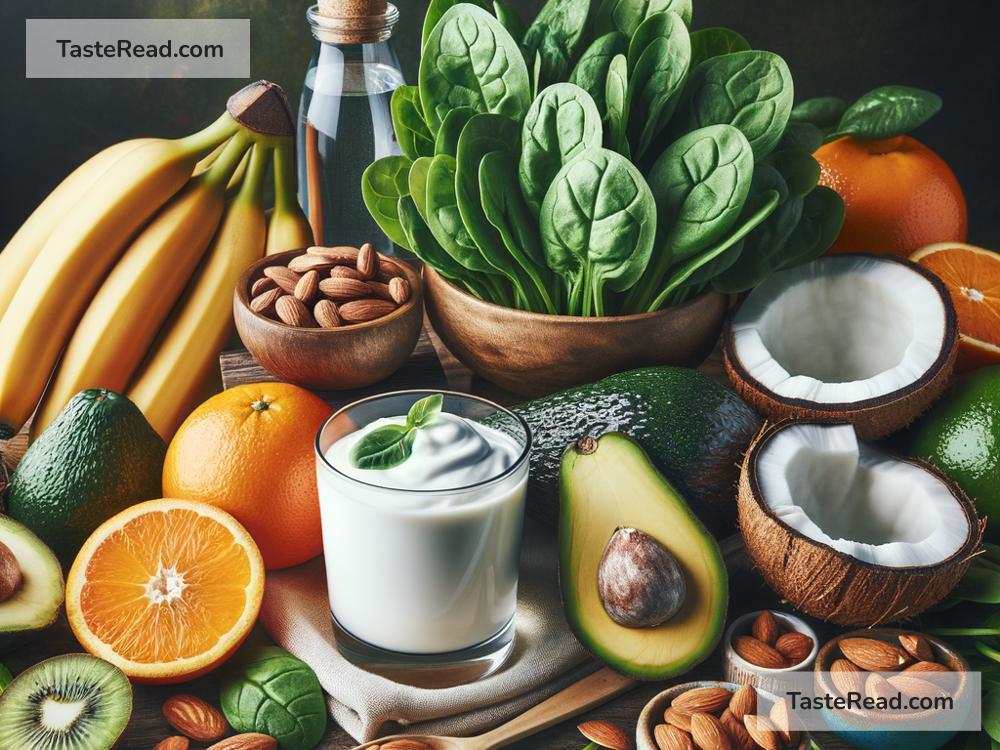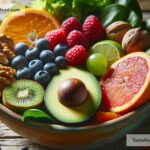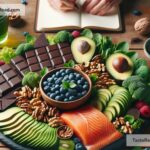Foods for Improving Electrolyte Balance: Keeping Your Body Hydrated and Healthy
Electrolytes are minerals that help your body function properly. They play a crucial role in muscle movement, nerve function, and keeping your fluid levels balanced. The main electrolytes include sodium, potassium, magnesium, calcium, and chloride. When your body loses electrolytes through sweat, urine, or illness, it’s important to replenish them with the right foods. In this blog, we’ll explore simple, everyday foods that can improve your electrolyte balance and keep you feeling your best.
Why Are Electrolytes Important?
Electrolytes control how much water stays inside and outside your cells, help your muscles contract, and allow your nerves to send signals. If your electrolyte levels fall too low or rise too high, it can lead to problems like muscle cramps, fatigue, dehydration, or even severe health issues.
Sometimes, your electrolytes can become unbalanced due to:
– Intense exercise
– Hot weather or excessive sweating
– Being sick with vomiting or diarrhea
– Poor diet or dehydration
Thankfully, eating the right foods can help restore and maintain a healthy electrolyte balance.
1. Bananas – The Potassium Powerhouse
Bananas are an excellent source of potassium, one of the most essential electrolytes for your body. Potassium helps maintain healthy blood pressure, supports proper muscle and nerve function, and keeps your fluid balance in check. A single banana contains about 400 mg of potassium, making it an easy snack to boost your electrolyte levels.
How to use it: Add bananas to your breakfast, blend them into smoothies, or eat them as a post-workout snack.
2. Coconut Water – Nature’s Sports Drink
Coconut water is often referred to as “nature’s sports drink” because it’s rich in potassium, sodium, and magnesium. It’s a refreshing way to hydrate after sweating or exercising since it can quickly replenish lost electrolytes. Compared to sugary energy drinks, coconut water is natural and lower in calories.
How to use it: Enjoy coconut water on its own, or mix it with fresh fruit juice for added flavor.
3. Spinach – Packed with Magnesium
Magnesium is another vital electrolyte your body needs, especially to support muscle relaxation and energy production. Spinach is one of the best sources of magnesium, along with other essential nutrients like calcium and potassium. It’s easy to incorporate spinach into meals to give your body an electrolyte boost.
How to use it: Add spinach to salads, throw it into stir-fries, or blend it into your favorite smoothie recipes.
4. Dairy Products – Rich in Calcium
Calcium is not just important for strong bones; it’s also an essential electrolyte that helps with muscle contractions and nerve communication. Dairy products like milk, yogurt, and cheese are great sources of calcium. Plus, they provide protein to keep you feeling full and energized.
How to use it: Drink a glass of milk with meals, enjoy yogurt as a snack, or add cheese to salads or sandwiches.
5. Oranges and Citrus Fruits – High in Potassium
Oranges, grapefruits, and other citrus fruits are fantastic sources of potassium. They’re also loaded with water, making them a hydrating snack. Additionally, citrus fruits contain vitamin C, which supports your immune system and overall health.
How to use it: Eat oranges or grapefruits as a snack, or drink freshly squeezed orange juice to replenish electrolytes.
6. Nuts and Seeds – Magnesium and More
Nuts and seeds, like almonds, sunflower seeds, and pumpkin seeds, are packed with magnesium, potassium, and healthy fats. They’re not only great for maintaining electrolyte balance but also for providing long-lasting energy throughout the day.
How to use it: Enjoy a small handful of nuts and seeds as a snack, or sprinkle them over salads, oatmeal, or yogurt.
7. Avocados – A Potassium Superstar
Avocados are another excellent source of potassium, containing even more of this electrolyte than bananas. They’re also rich in healthy fats, which are good for your heart and overall health. Adding avocado to your meals is an easy way to boost your potassium intake.
How to use it: Mash avocados into guacamole, slice them onto toast, or add them to salads and sandwiches.
8. Salt – A Source of Sodium
Sodium plays a key role in maintaining fluid balance and transmitting nerve signals. Table salt is a simple and effective source of sodium, but it’s important not to overdo it. Too much salt can harm your health. Ideally, sodium should come from naturally salty foods like pickles, olives, or lightly salted nuts.
How to use it: Add a pinch of salt to your meals if needed, but focus on eating balanced, whole foods rather than processed snacks loaded with excessive sodium.
9. Watermelon – Hydration Hero
Watermelon is rich in water, making it an ideal fruit for hydration. It also contains potassium and magnesium, helping to replenish electrolytes lost during physical activity. Plus, watermelon is naturally sweet and easy to enjoy during hot summer days.
How to use it: Eat watermelon slices as a refreshing treat or blend them into a juice or smoothie.
The Bottom Line
Keeping your body’s electrolyte levels balanced is essential for staying hydrated, feeling energetic, and supporting overall health. Foods like bananas, coconut water, spinach, dairy products, nuts, seeds, and citrus fruits provide key minerals like potassium, sodium, magnesium, and calcium. By incorporating these nutrient-rich foods into your diet, you can help your body stay strong and healthy.
Remember, hydration plays a big role in electrolyte balance as well. Make sure to drink enough water each day, especially if you’re exercising, sweating, or feeling under the weather. With the right foods and fluids, you can give your body the support it needs and feel great every day!


